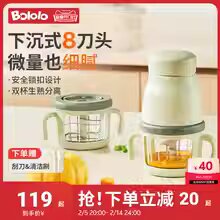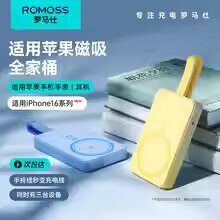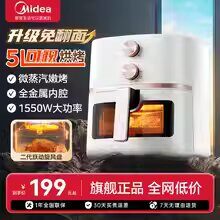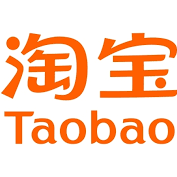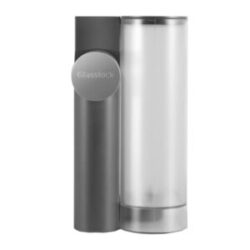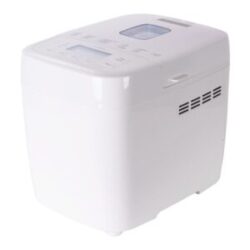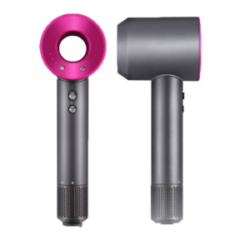四、使用量词时需要注意的几个问题 Points that merit special attention
(一)关于名量词 Nominal measure words
汉语里有丰富的量词。很多事物都可以计量,而且都有自己特 定的量词,不能乱用。因此需要记住每个量词的用法,这是外国人 学习汉语时不可忽视的。
In Chinese, there are a large number of measure words. Everything can be “measured” and that measure is represented by a specific measure word. Therefore it is imperative for foreign learners of Chinese to learn every noun with its matching measure word.
现将常用的量词和名词的搭配情况举例如下:
Here is a list of commonly used measure words with some of the nouns matching them:
常用名量词表(接音序排列)和常用名词举例
把 刀子 尺 壶 梳子 伞 扇子 锁 钥匙 牙刷 椅子
班 车 飞机
包 粮食 大米 糖果 衣服 零件
杯 水 茶 牛奶 酸奶 咖啡 饮料 果汁 酒
本 书 杂志 画报 字典 词典 小说 相册 影集
笔 钱 款子 生意
部 书 电影 电视剧 字典
册 书 账本
层 台阶 楼 灰 皮(儿) 奶油
场 雨 雪 比赛 争论 战争 电影 话剧
出 戏 京戏 京剧
沓 白纸 稿纸 收据 发票 报纸 钞票
滴 水 汗 血 油 眼泪
点 意见 想法 看法 主意 说明
顶 帽子 帐子 帐篷 轿子
段 路 电线 绳子 话 文章 时间 距离 经历
堆 雪 土 落叶 废品
队 学生 战士 难民 人马
对 夫妇 恋人 耳环 花瓶 枕头 鸳鸯 喜鹊 鹦鹉
朵 花 云
份 饭(菜) (贺)礼 文件 材料 报(纸) 情意
封 信 电报 电子邮件
副 手套 眼镜 对联 餐具 扑克牌 手镯 耳环 碗筷
个 人 学生 朋友 国家 书架 本子 汉字 杯子 碗 盘子 面包 馒头 苹果 梨 猕猴桃 饺子 星期 月 钟头 世纪 符号
根 针 筷子 头发 骨头 竹子 棍子
行 字 诗 眼泪 树
架 机器 飞机 摄像机
间 屋子 房子 病房
件 衣服 衬衫 大衣 事 礼物 行李
届 选举 毕业生 理事会 会议
句 话 汉语 英语 句子
棵 树 草 白菜 葱
颗 星 心 子弹 豆子 石子 牙(齿)
口 人 井 水 猪 气
块 钱 糖 面包 点心 手表 手帕 肥皂 黑板砖
类 人 问题 事情
粒 米 粮食 种子 珍珠 药丸 沙子 糖球
辆 车 自行车 汽车 货车 马车
面 镜子 墙 锣 鼓
名 教师 学生 医生 记者 科学家 导演 演员
排 人 树 房子
批 学生 运动员 产品 货物 毕业生
匹 马 布 绸缎
篇 文章 论文 课文
片 面包 肉 药(片) 草地 树林 建筑
瓶 水 矿泉水 纯净水 蒸馏水 饮料 咖啡 啤酒 醋 酱油 植物油 墨水 香水
群 人 孩子 羊 鸭子 骆驼 猴子
首 歌 诗 曲子
双 眼睛 手 袜子 鞋 筷子
所 房子 学校 医院
台 机器 电脑 电视机 空调机 戏 布景
套 衣服 家具 住宅 课本 教材 制度 办法 纪念邮票
条 毛巾 裤子 裙子 新闻 消息 意见 香烟 肥皂 规定 河 路 街道 角 狗 船
筒 茶叶 牙膏 鞋油
头 牛 狮子 大象 骆驼 蒜
位 朋友 客人 代表 顾客 乘客 老人 先生 太太 专家
项 任务 活动 建议 议题 工程 说明
样 点心 菜 东西 礼物
页 纸 书
张 纸 报 画儿 票 邮票 牌 照片 桌子 床 嘴 脸
支 笔 铅笔 毛笔 歌 枪 手枪 玫瑰花
只 手 手套 眼睛 耳朵 脚鞋 鸡 猫 熊猫 鸟 狼 箱子
种 人 事情 颜色 情况 布 绸级 水果 蔬菜 东西 看法
座 山 楼 桥 城市 雕像 别墅 宾馆 庙 宫殿 纪念碑
度量衡单位量词
度 电 (体温 气温) 角
吨 水 煤 钢铁
公尺 布 电线 松紧带
公斤 水 汽油 水果 蔬菜
公里 路 公路 铁路 地铁 海岸线
公顷 土地 稻田
斤(0.5公斤,500 克)
克 金子 白糖 砂糖 水果 点心
里(0.5 公里) 路
米 布 (身高)
平方公里 土地 (面积)
- “个”是应用最广的名量词;但很多名词各有其特定的量词,就不能用“个”了。
个is the most common and multi-purpose nominal measure word. But many nouns require specific measure words. In those cases, we cannot use 个.
2.“位”和“名”都是用于人的量词,但都不能直接用在“人”字前边做量词。“位”带有敬意,要说“一位(名)什么样的人”。例如:
位 and 名 are used with nouns of personal reference with the exception of A. M, is used in a polite manner. Therefore you have to say一名(位)什么样的人”.
一位老师
两位老人
三位妇女
一名医生
四名考生
六名儿童
3.“点、些”都是不定量词,前面只能用“一”,不能用其他数词。例如:
点 and些 are indefinite measure words which can only be placed before the numeral 一. For example:
一点(儿)水
一点(儿)礼物
一些香蕉
“一点(儿)”表示少量,一般只能用于事物。
一些朋友
一点(儿) which means a small quantity can only modify nouns of non-personal reference.
“点、些”也常用在代词“这、那、哪”后边。例如:
点 and 些 are also often used after the pronouns 这, 那 and 哪. For example:
那点(儿)糖
那些花这点(儿)东西
那点(儿)事
这些客人
哪些地方
4.本身带有量词性的名词前边不能再用量词。例如:
Measure words cannot be used with nouns of quantity. For example:
一天 x一个天
一年 x一个年
两岁 x两个岁
三课 x三个课
 亚马逊导购
亚马逊导购  卑诗省当天新盘
卑诗省当天新盘  读新闻学外语
读新闻学外语
- 少数度量衡单位可以连用,也可以叫做复合量词;但是一般名量词不能连用。例如:
Some measure words of units of length, capacity and weights can be used in succession. They are called compound nominal measure words. But ordinary nominal measure words cannot be used in this way. For example:
千瓦小时 (表示一小时电的度数。)
(meaning kilowatt per hour)
吨公里 (表示一公里的吨数。)
(meaning ton per kilometer)
6.名量词重叠后常做主语或主语的定语。例如:
The reduplicated form of nominal measure words often serve as subjects or attributives modifying the subject. For example:
条条(道路)都可到那儿。(做主语)
( as the subject)
本本画报都很有意思。(做定语)
as the attributive)
谓语前边一般要用“都”。
都is generally used before the predicate.
(二)关于动量词
Verbal measure words
汉语里很多动作也可以计量。现将常见的动量词和动词的搭配情况举例如下:
The frequency of actions can be counted. Here is a list of the commonly used verbal measure words and some verbs matching them. For example:
| 动量词 Verbal measure | 可以和量词搭配的动词 Matching verbs |
| 次 | 去 找 来 参观 |
| 遍 | 看 说 写 念 听 抄 翻译 |
| 下儿 | 打 敲 摇 想 玩 讨论 |
| 趟 | 去 来 |
| 回 | 看 送 |
| 场 | 下(雨) 打(球) |
| 阵 | 刮(风) |
| 顿 | 吃 打 骂 |
- 动量词大多用在动词后边做补语,表示数量。例如:
Most verbal measure words are used as complements of verbs to indicate the frequency of actions. For example:
我们讨论过两次。
我去一趟。
动量词也可以放在动词前边做状语,一般表示强调在若干次数内完成或进行某动作。例如:
Verbal measure words can also be used before verbs as adverbial adjuncts emphasizing that the action is carried out or completed within a
certain number of times. For example:
我们两趟就搬完了。
他要一次写好。
2.“遍”指从头到尾的完整过程。例如:
遍 indicates the complete duration of an action from beginning to end. For example:
这篇文章你再看一遍吧。
3.“下儿”有两种含义。
下尔 has the following two meanings:
(1) 表示具体的动作单位。例如:
Indicating the number of times sth. happens. For example:
钟敲六下儿。(六点钟)
主席摇两下儿铃。(铃响两声)
(2)“下儿”前边用“一”,表示动作经历的时间短,作用和动词重叠一样。例如:
一 is used before FJL to show that an action lasts for a very short time. -FJL functions as a verbal reduplication. For example:
我得去一下儿。
对不起,您等一下儿。
我们要讨论一下儿。
4.动量词重叠后常用在动词前做状语。例如:
Reduplicated verbal measure words are used before verbs as adverbial adjuncts. For example:
他次次都来。
5.有的动量词可用在名量词后边表示人或事物和动作数量的总和,也可以叫复合量词。例如:
There are some combinations of “Nominal measure word + Verbal measure word which indicate the total number of times of an action
done by a certain number of agents (persons or things). For example:
架次
综合表示飞机的架数和飞行的次数。
The total number of flights made by a certain number of aeroplanes.
人次
综合表示人数和次数。
The total number of times of an action done by a certain number of people.
(三)量词和数词“半”连用时的位置
Position of the measure word when used with the numeral 半
- 量词在“半”的后边,表示数量是二分之一。例如:
Followed by a measure word, 半 means “half of the total quantity or amount”. For example:
(1)“半”+量词 +(名词)
半+measure word + (noun)
半个(橘子)
半张(纸)
半瓶(酒)
半只(鸡)
半公斤(苹果)
半个(钟头)
(2)“半” +带量词性的名词
半+ noun of quantity
半年
半天
2.量词前边有整数时,“半”要放在量词后边,表示还有二分之一。例如:
半occurring after a measure word preceded by a whole number expresses the meaning of “…and a half”, as in:
(1)整数+量词+“半”+ (名词)
whole number + measure word + 半 + (noun)
我只要一张半(纸)。
x我只要一半张(纸)。
她们打了一个半小时(球)。
x她们打了一半个小时(球)。
又如:
三瓶半(酒) x三半瓶(酒)
两斤半(羊肉) x两半斤(羊肉)
(2) 整数+带量词性的名词+“半”
whole number + noun of quantity +半
一课半 x一半课
两岁半 x两半岁
一个半钟头 x一半个钟头
(四)量词和数词“多”连用时的位置
Position of the measure word when used with the numeral 多
量词和表示超过某数的“多”连用时要注意两点:
Two points should be noted when the measure word is used in combination with 多( .. and more) :
1.表示多于“十、百、千、万”等的概数时,“多”紧接在整数后边,用在量词或本身带量词性的名词前边。例如:
多 immediately follows the whole number 十、百、千、万, etc. and precedes the measure word or noun of quantity, as in:
(1) 整数(个位数为“0”) +“多” +量词 + (名词)
whole number (the unit place is “0”) +多 + measure word + (noun)
这双皮鞋要三十多块(钱)。
x这双皮鞋要三十块多(钱)。
今天食堂买了三百多公斤(肉)。
x今天食堂买了三百公斤多(肉)。
又如:
三十多块(钱)——不足四十块
x三十块多(钱)
五百多公斤(牛肉)——不足六百公斤
x五百公斤多(牛肉)
一千多吨(煤)——不足两千吨
x一千吨多(煤)
(2) 整数(个位数为“0”)+“多” +带量词性的名词
whole number (the unit place is “0”) + 多 + noun of quantity
玛丽二十多岁了。x玛丽二十岁多了。
我们三十多年没见面了。x我们三十年多没见面了。
又如:
Here are two more examples:
四十多岁一(41 ~49 岁) x四十岁多
八十多年一一(81 ~89 年) x八十年多
- 表示不满
的概数时,量词要放在整数和“多”之间。例如:
In order to express an approximate number below 一, the measure word should be placed between the whole number and , as in:
(1) 整数(个位数为1~9) +量词 +“多”+ (名词)
whole number (the unit place is a number from 1 to 9) +measure word +多 + (noun)
他们走了两个多小时。x他们走了两多个小时。
十二点多钟他才到家。x十二多点钟他才到家。
又如:
Here are some more examples:
五分多(钟) x五多分(钟)
三公斤多(西红柿) x三多公斤(西红柿)
(2) 整数(个位数为1~9) +带量词性的名词+“多”
whole number ( the unit place is a number from 1 to 9) + noun of quantity + 多
我工作两年多了。x我工作两多年了。
今年小明八岁多。x今年小明八多岁。
又如:
Here are some more examples:
五天多
四课多
(五)“一点儿”和“一些”的用法
The use of 一点儿 and 一些
1.可在名词前做故定语。例如:
They can be used before a noun as an attributive. For example:
我想查一点儿资料。
我会一点儿汉语。
我想查一些资料。
我会一些汉语。
2.可在形容词后做补语。例如:
They can be used after an adjective as a complement. For example:
她的病好一点儿了。
今天暖和一点儿了。
她的病好一些了。
今天暖和一些了。
- 用在动词或形容词后边时,可以省去“一”。例如:
When preceded by a verb or an adjective, 一 can be omitted. For example :
我想查点儿资料。
今天暖和些了。
- 不能用在形容词或动词前做状语。例如:
It cannot be used as an adverbial adjunct to premodify an adjective (or verb). For example:
x昨天一点儿冷。
x他一点儿发烧。
x我一些不舒服。
x他一些着急。
(六)钱的表示法
Counting Chinese money
1.中国钱币是人民币。人民币的计算单位是“元、角、分”或“块、毛、分”。
The Chinese currency Renminbi (RMB) has three units: 元、角 and 分 or 块,毛 and分。 - 用阿拉伯数字写出来的钱数,后边的单位量词一定要用‘元”。例如:
元 is always used after an amount of money written in Arabic numerals. For example:
0.01 元 是一分(钱)
0.20 元 是 两角(钱)
6.75 元 是 六元七角五分(钱)
8.00 元 是八元(钱)
53.49 元 是 五十三元四角九分(钱)
钱数后边的名词是“钱”,口语里常不用。
In spoken Chinese, in the above examples is often omitted. - 口语里多用“块、毛、分”,还常省去最后一个量词不说。
例如:
块,毛 and 分 are more used in spoken Chinese and last measure word can be omitted. For example:
0.20 元 是两毛
9.50 元 是 九块五(毛)
1.20 元 是 一块二(毛)
3.50 元 是三块五(毛)
2.22 元 是 两块两毛二(分)
5.35 元 是 五块三毛五(分)
9.50 元 是 九块五(毛)
(七)时间的表示法
Expression of times
1.年、月、日的时点表示法
Expression of year, month and date as a point of time
(1)年:序数+“年”。例如:
Year: ordinal number + 年, for example:
1949A. D.是公元一九四九年。x公元一九四九个年
2006A. D.是公元二零零六年。x公元二零零六个年
2008 年要说成二零零八年。
大学四年(All four years in a university) :
第一年是一年级,第二年是二年级,第三年是三年级,第四年是四年级。
(2)月:序数+“月”。例如:
Month: ordinal number + A, for example:
一年有十二个月,这十二个月的名称是:
The names of the twelve months of a year are:
一月,二月,三月,四月,五月,六月,七月,八月,九月,十月,十一月,十二月
(3)日:序数+ “日”或“号”;口语里多用“号”。
例如下面的2006年3月的月历:
Date: Ordinal number + 日 or 号, preferably in colloquial language. For example: the calendar of March in 2006.
| 星期日 | 星期一 | 星期二 | 星期三 | 星期四 | 星期五 | 星期六 |
| 1 | 2 | 3 | 4 | |||
| 一号 | 二号 | 三号 | 四号 | |||
| 5 | 6 | 7 | 8 | 9 | 10 | 11 |
| 五号 | 六号 | 七号 | 八号 | 九号 | 十号 | 十一(号) |
| 12 | 13 | 14 | 15 | 16 | 17 | 18 |
| 十二(号) | 十三(号) | 十四(号) | 十五(号) | 十六(号) | 十七(号) | 十八(号) |
| 19 | 20 | 21 | 22 | 23 | 24 | 25 |
| 十九(号) | 二十(号) | 二十一(号) | 二十二(号) | 二十三(号) | 二十四(号) | 二十五(号) |
| 26 | 27 | 28 | 29 | 30 | 31 | |
| 二十六(号) | 二十七(号) | 二十八(号) | 二十九(号) | 三十(号) | 三十一(号) |
说“十一日(号)”到“三十一日(号)”时,可以省去“日(号)”;但不能用“天”。“日(天)”前一定不能加量词“个”。例如:
When you say “+-” all the way to ” +-“, § can be omitted in spoken language. But you can never use with “date” as a point of time. For example:
昨天四号,今天五号,明天六号。
x昨天四,今天五,明天六。
明天二十四(号)。
x明天二十四天。
今天二月二十八(日)。
x今天二月二十八个日。
(4)星期:一个星期有七天,这七天的名称是:
The names of the seven days of the week are:
星期一,星期二,星期三,星期四,星期五,星期六,星期日(星期天)
“星期”也说“礼拜”。例如:礼拜一,礼拜五等。“礼拜”也可以指星期日,但“星期”不能指星期日。
星期 can also be called 礼拜,For example: 礼拜,礼拜五 etc.
“礼拜” can also refer to Sunday, but “星期” can not.
(5) 汉语里表示日期的顺序是:年一月一日。例如:
A date is given in the following order: Year-Month-Date. For example:
一九八六年五月十二日(号)-1986/05/12
二零零六年一月二十九日(号)-2006/01/29
二零零八年八月二十二日(号)-2008/08/22
(6) 一个人出生日期的表示法是“某年某月某日生”。例如:
To express one’s birthday: a For example:
他1988 年5月 18 日生。
她的生日是:1985 年11 月3日。
2.年、月、日的时段表示法
Year, month and day as periods of time
(1)年:基数+“年”。基数和“年”之间不能用“个”。例如:
Year: numeral + 年, 个 cannot be inserted in between. For example:
5年一五年
他学了五年汉语。x他学了五个年汉语。
12年一一十二年
她工作十二年了。x她工作十二个年了。
(2)月:基数+量词“个”+ “月”
Month: numeral + measure word 个+ 月
三个月
六个月——半年
十二个月——一年
(3) 日:基数+“天”或“日”。基数和“天”或“日”之一年有十二个月。间不能用“个”。例如:
Date: numeral 天+ or 日, 个 cannot be inserted between the numeral and 天 or 日. For example:
一个月有三十天。x一个月有三十个天。
一年有三百六十五天。x一年有三百六十五个天。
她病了两天。x她病了两个天。
(4)星期:基数 +量词“个” +“星期”
Week: numeral + measure word 个 + 星期.
两个星期(14 天)
三个星期(21 天)
八个星期(56 天)
一个星期有七天。
(5)“上午、下午、晚上”等表示时点的名词,也可以用在基数和量词“个”后边作为时段的单位。例如:
Nouns expressing points of time such as 上午、下午、晚上, etc. , can also be used after numerals and measure word as units of periods
of time. For example:
一个上午
三个下午
两个晚上
- 钟点的表示法
Expression of times of the clock
(1)“点”,表示时点。
点 means “o’clock”.
数词(1~12)+量词“点”+(名词“钟”)
Numeral (1 – 12) + measure word 点 + (noun钟 )
1: 00是一点(钟)
2: 00是两点(钟)
3: 00是三点(钟)
10: 00是十点(钟)
12: 00是十二点(钟)
“点”后边的名词“钟”,口语里一般不说。
钟 is often left out in spoken Chinese.
(2)“分”,比“点”小的单位,表示时点。
分 means “minute” indicating a point of time.
数词(1~59) +量词“分”+ (名词“钟”)
Numeral (1 ~59) + measure word + (noun )
1: 01 一点(零)一分,一点过一分
1: 05 一点(零)五分,一点过五分
1: 09 一点(零)九分,一点过九分
1: 10 一点十分,一点过十分
1: 15 一点十五分,一点一刻
1: 30 一点三十分,一点半
1: 45 一点四十五分,一点三刻
1: 55 一点五十五分,差五分两点
1: 59 一点五十九分,差一分两点
十五分钟时,常说“一刻””;四十五分时,常说“三刻”。
例如:
一刻 is often substituted for 十五分钟 and 三刻for 四十五分钟, For example:
2: 15 两点一刻
6: 15 六点一刻
9: 15 九点一刻
3: 45 三点三刻,差一刻四点
7: 45 七点三刻,差一刻八点
12: 45 十二点三刻,差一刻一点
三十分钟时,常说:数词+量词“点”+“半”。例如:
For =tA, we use this formula: Numeral + measure word点+半。For example:
2: 30 两点半(钟) x两点两刻
5: 30 五点半(钟) x五点两刻
11: 30 十一点半(钟) x十一点两刻
(3)“秒”,比“分”小的单位,表示时点。
秒meaning “second” is a unit smaller than 分, indicating a point of time.
数词(1~59) +量词“秒”+(名词“钟”)
Numeral (1 – 59) + measure word 秒+ ( noun 钟)
一点三分十秒 三点七分六秒
4.“小时”等表示时段
小时 (hour), etc. indicating periods of time
(1)“小时”、“钟头”
一天有二十四个小时。汉语里用“小时”或“钟头”表示时段。例如:
There are 24 hours in a day. In Chinese, Hf or * is used for “hour”. For example:
一(个)小时 (60 分钟)
三(个)小时 (180 分钟)
半个钟头 (30 分钟) x半钟头
两个钟头 (120 分钟) x两钟头
一个半小时 (90 分钟) x一半小时
两个半钟头 (150 分钟) x两半钟头
用“钟头”时,数词和“钟头”之间一定要用量词“个”;用“小时”时,数词和“小时”之间可以不用量词“个”。
The measure word must be used between the numeral and 钟头, whereas 个 is optional when 小时 is used instead of 钟头.
(2)“分”、“秒”
一小时有60分钟,一分钟有60秒钟。例如:
There are 60 minutes in an hour and 60 seconds in a minute. For example :
五分(钟)——300 秒(钟)
十秒(钟)
(3)“刻”
一刻钟 (15 分钟)
三刻钟 (45 分钟)

